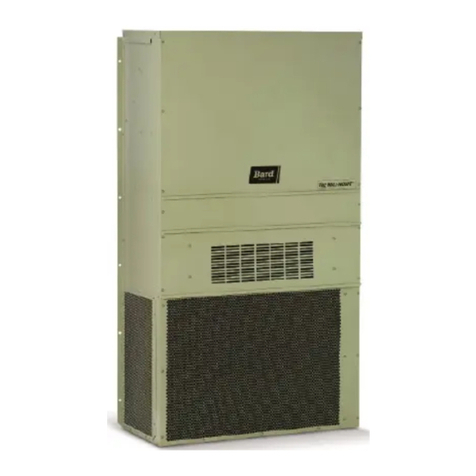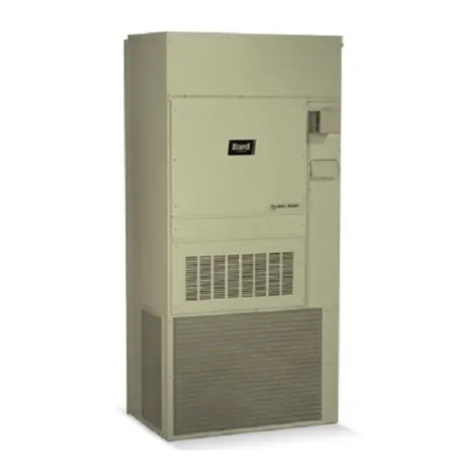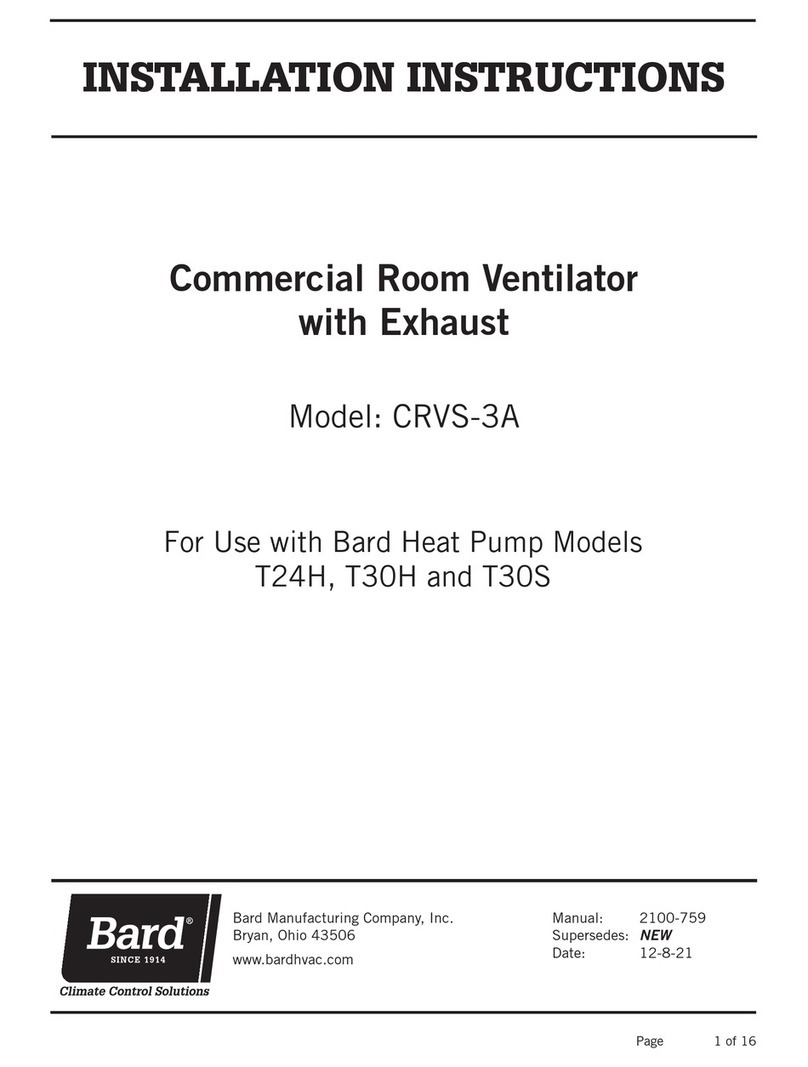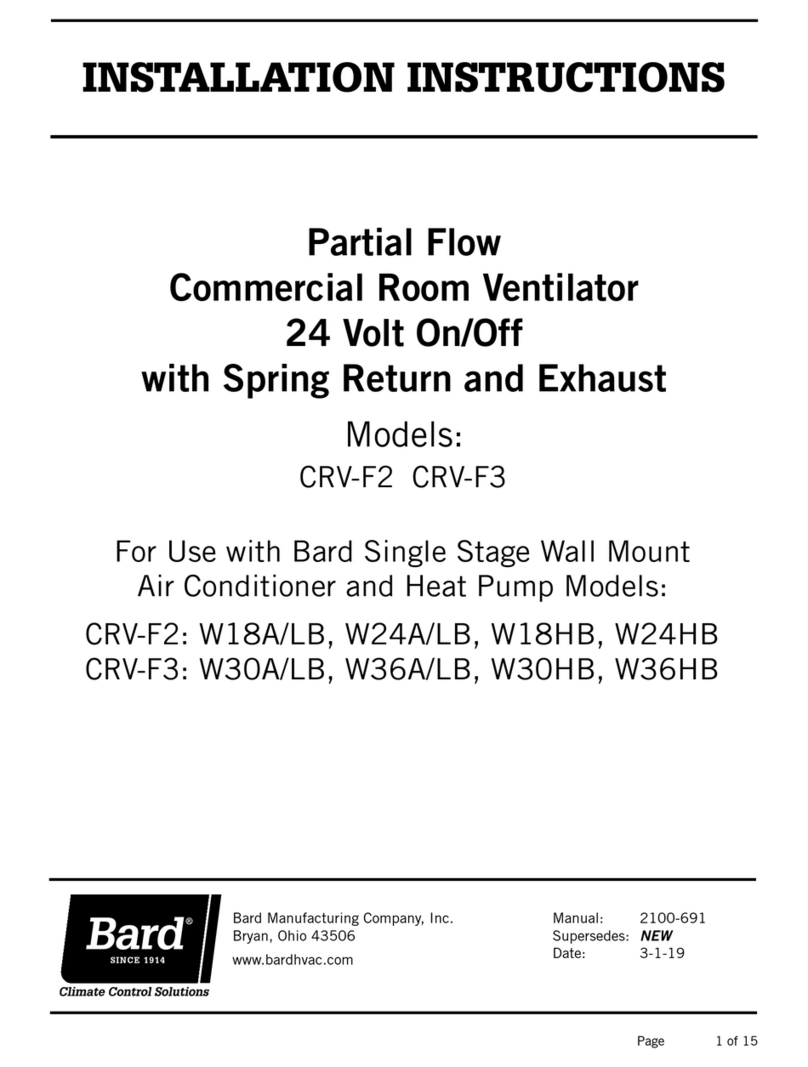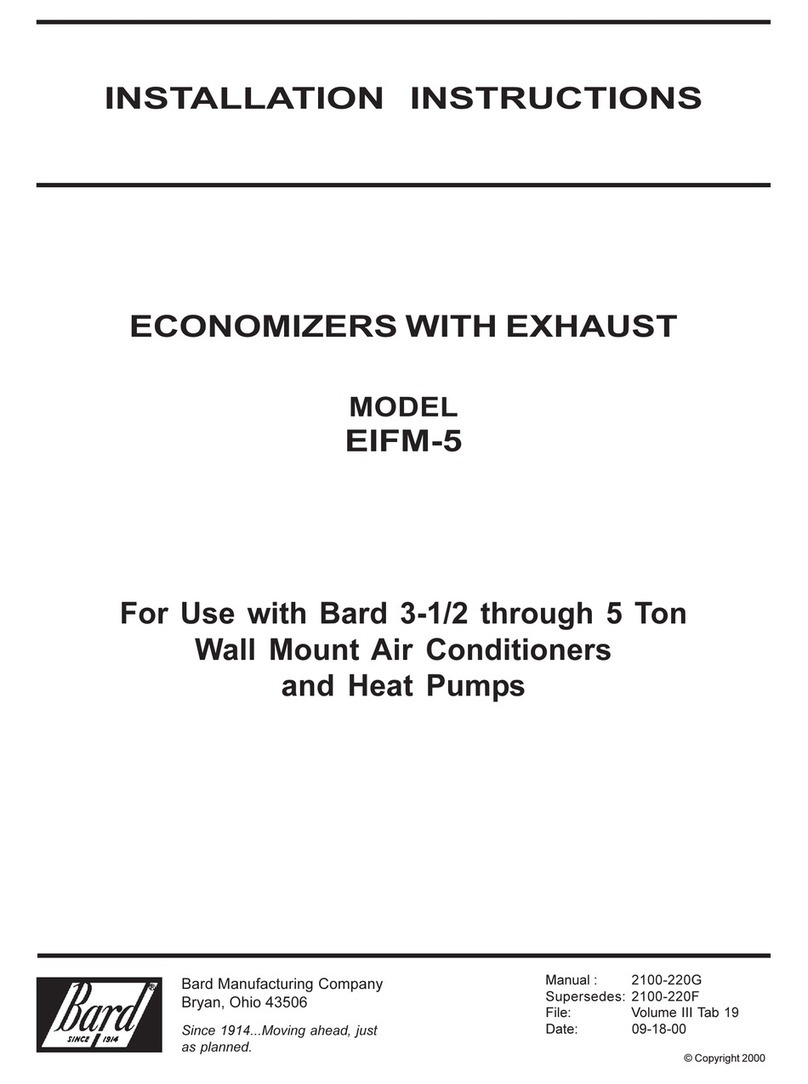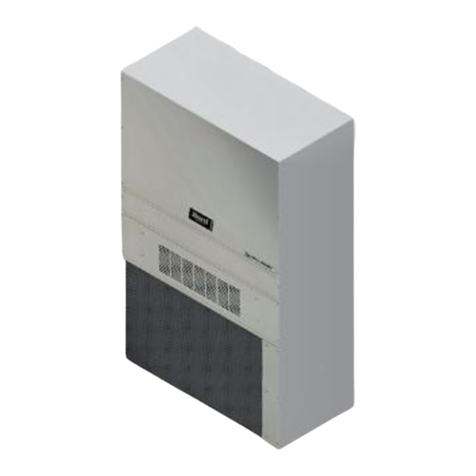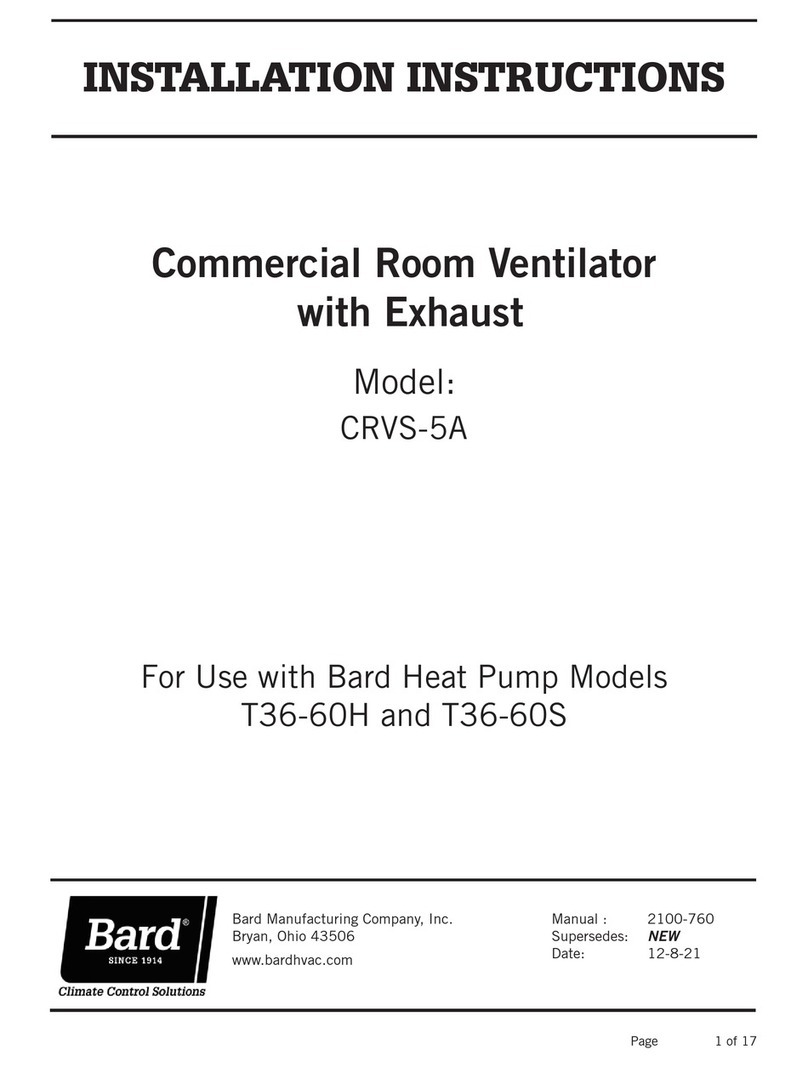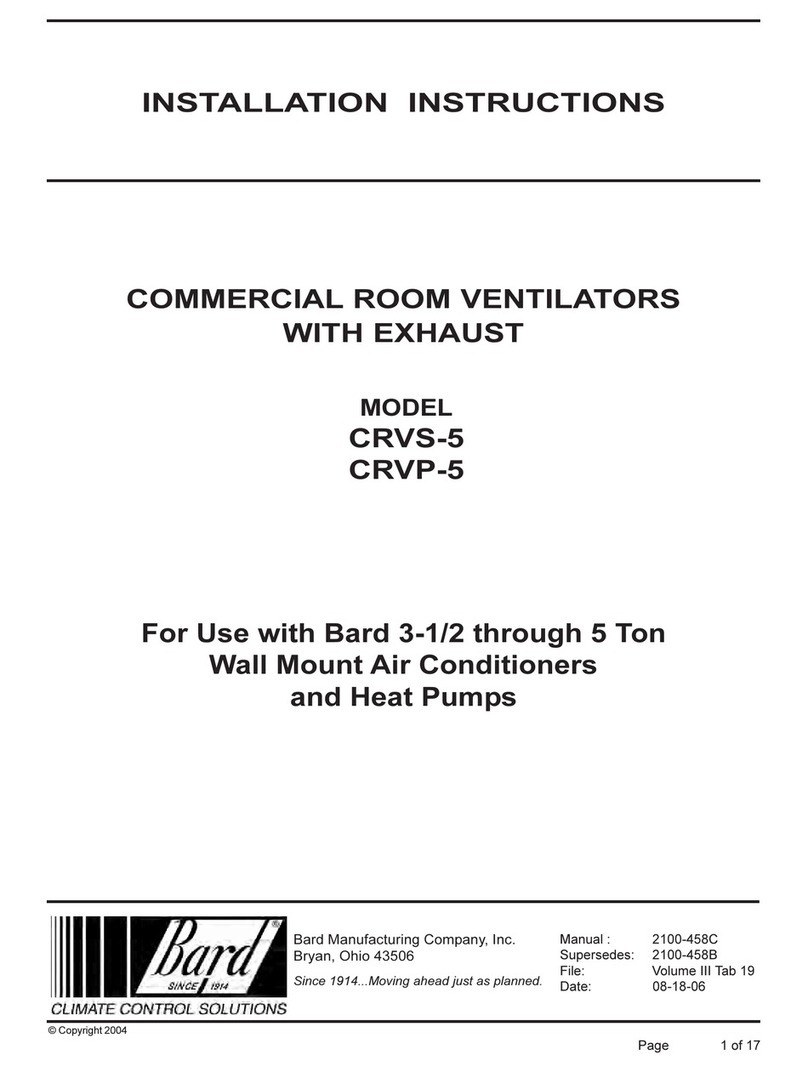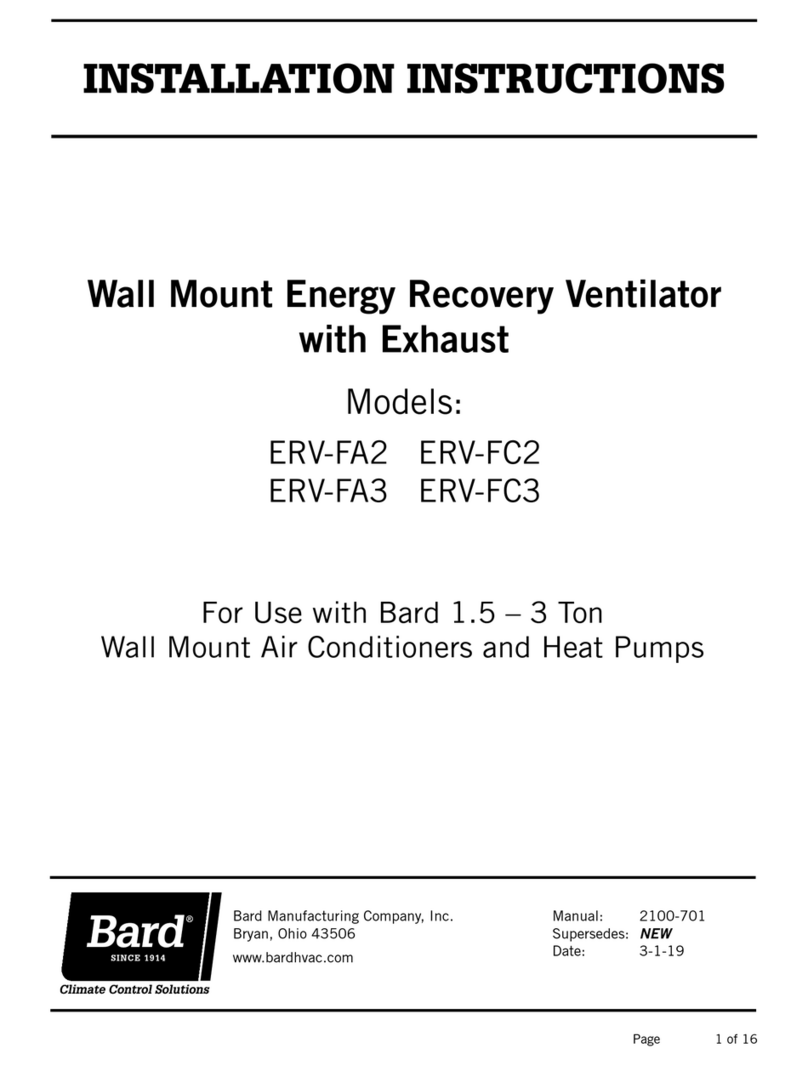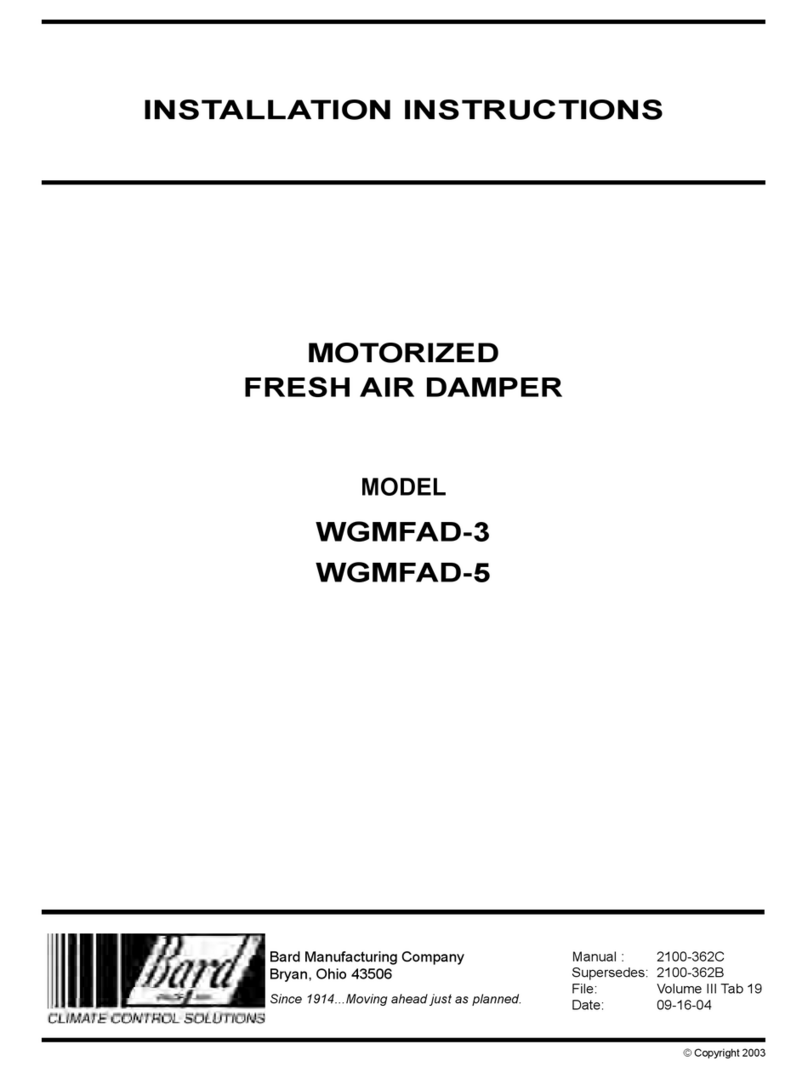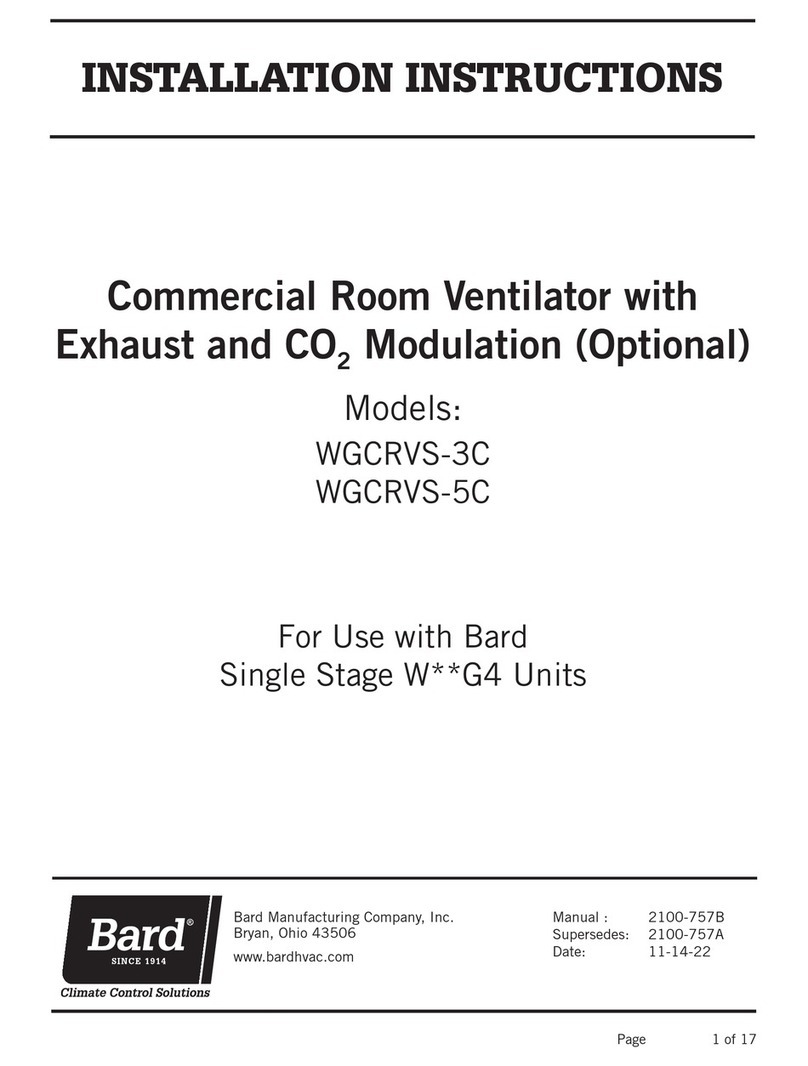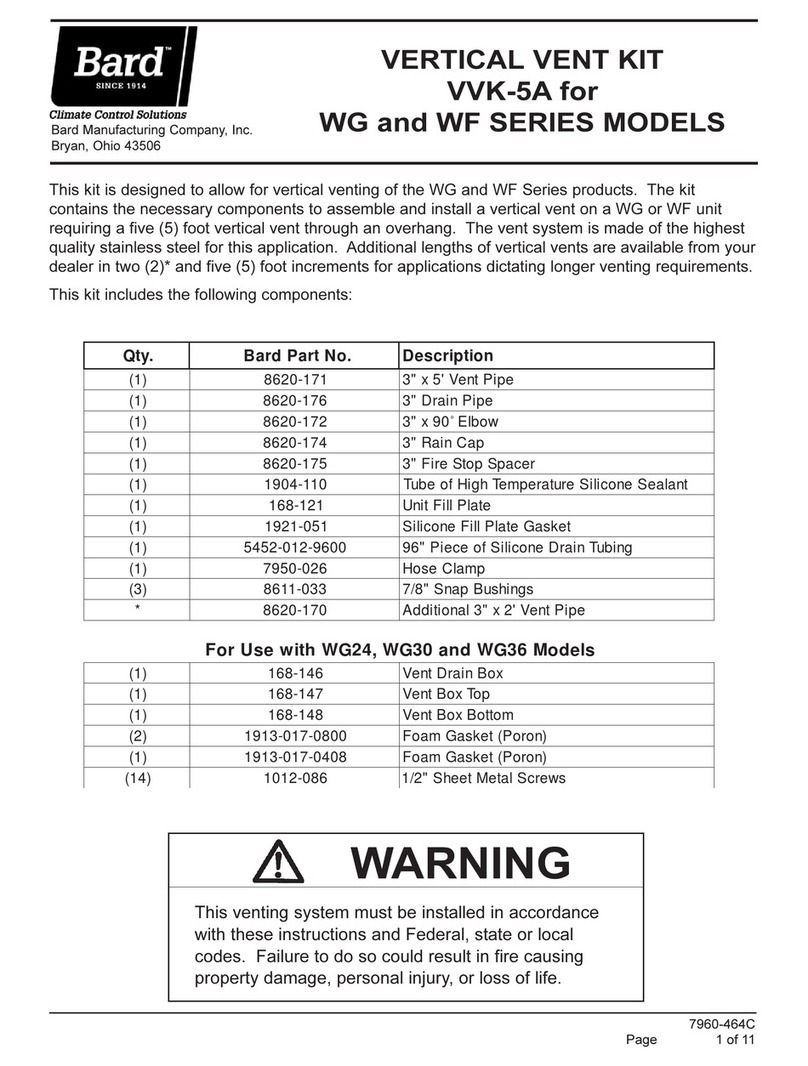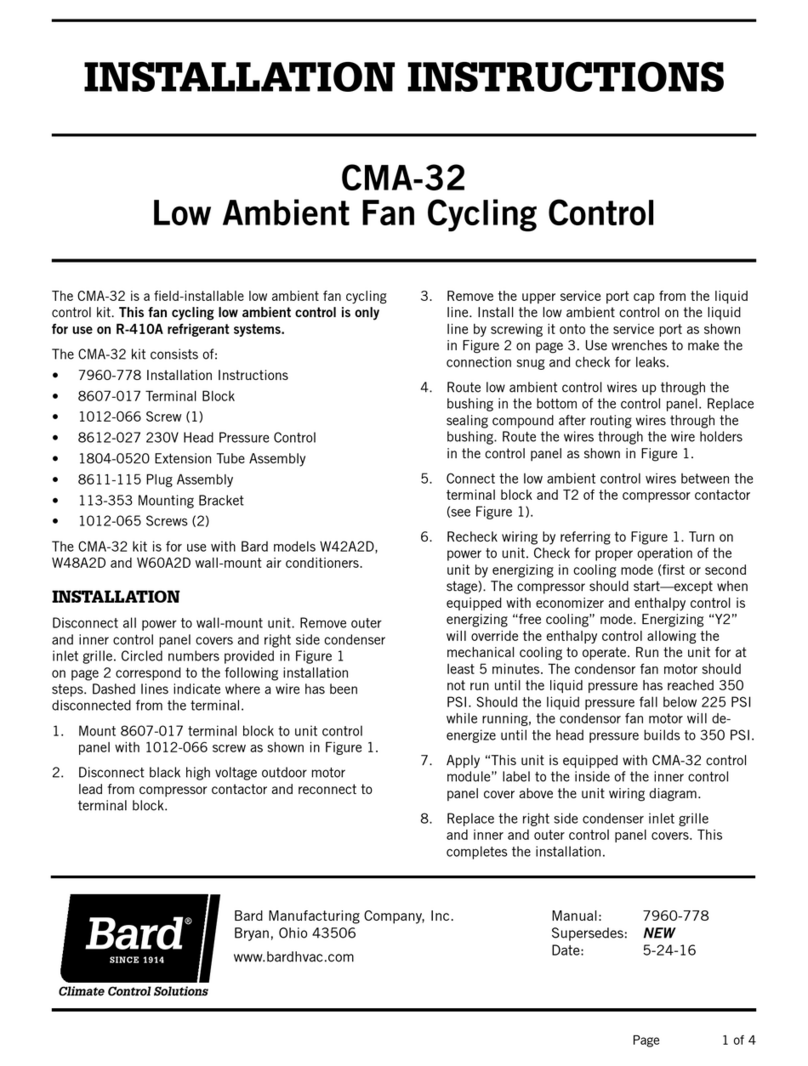
Manual 2100-457D
Page 10 of 16
BLADE ADJUSTMENT FOR DESIRED
VENTILATOR AIR
The amount of ventilation air supplied by the
commercial room ventilator is dependent on ve (5)
factors.
1. Return air duct static pressure drop.
2. Supply air duct static pressure drop.
3. Indoor blower motor speed.
4. Damper blade open position setting for each mode
of operation.
5. Tightness or looseness of building envelope.
You will have to set the damper position for each mode
of operation using the set-point potentiometers on the
Damper Position Step Control Board. See Figure 5.
Refer to the graphs on the following pages to determine
the necessary blade setting to achieve the ventilation
air required based upon blower only, Stage #1 and
Stage #2 modes of operation. These charts are model
specic, so you will have to match the chart to the
specic model you are working with.
1. Set the damper position for blower only operation.
A. Energize the evaporator blower by switching
thermostat to the manual fan position with
heat/cool in OFF position (or Jumper “R” to
“G” with thermostat disconnected at unit).
B. Locate potentiometer “R1” on the Damper
Position Step Control Board. See Figure 5.
C. Using a small screwdriver, adjust
potentiometer until damper position aligns
with numerical location on the label interior
of the sheet metal damper assembly.
2. Set the damper position for Stage #1 cooling/
heating operation.
A. Energize the evaporator blower and
compressorbyswitchingthermostattotheheat
or cool mode, and setting it to a minimal offset
totheroomtemperaturetoengagethemodeof
operation desired (or Jumper “R” to “G”
and “Y1” with thermostat disconnected at
unit).
B. Locate potentiometer “R2” on the Damper
Position Step Control Board. See Figure 5.
C. Using a small screwdriver, adjust
potentiometer until damper position aligns
with numerical location on the label interior of
the sheet metal damper assembly. (Make sure
there is not a call on “Y2” or “W2”.)
3. Set the damper position for Stage #2 cooling/
heating operation.
A. Energize the evaporator blower and
compressor by switching thermostat to the heat
or cool mode and set a large temperature offset
to the room temperature to engage the mode of
operation desired (or Jumper “R” to “G”,
“Y1” and “Y2” with thermostat disconnected
at unit).
B. Locate potentiometer “R3” on the Damper
Position Step Control Board. See Figure 5.
C. Using a small screwdriver, adjust
potentiometer until damper position aligns
with numerical location on the label interior of
the sheet metal damper assembly per the chart.







